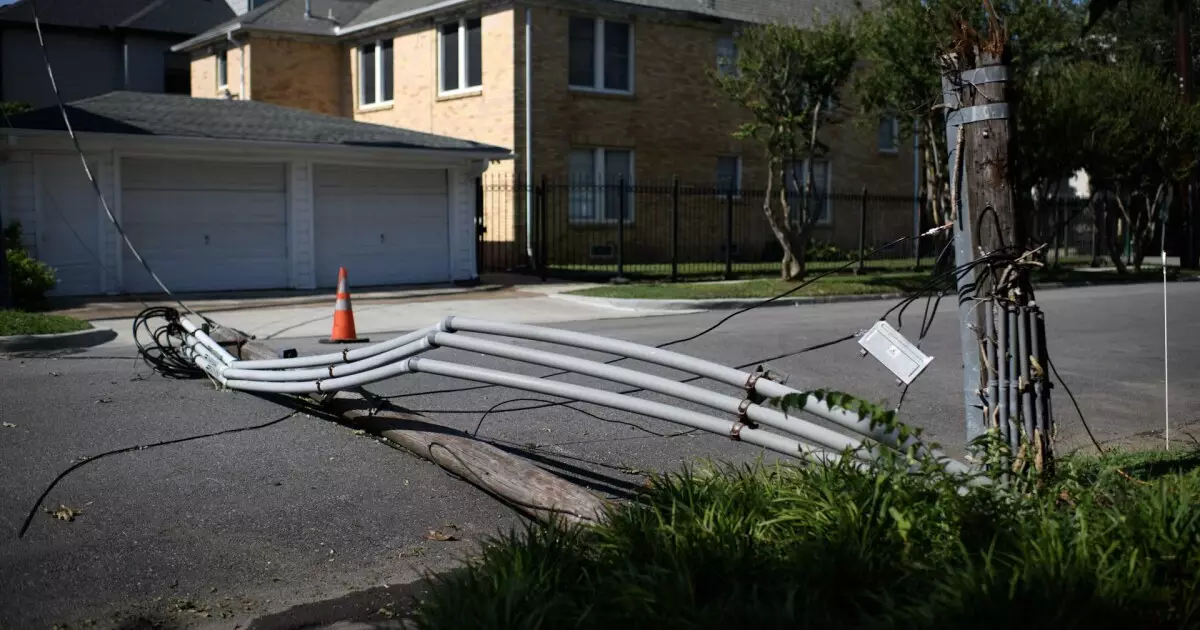Houston, the largest city in Texas and the fourth largest in the United States, finds itself grappling with a perfect storm of financial challenges. Natural disasters exacerbate an already tenuous fiscal landscape, spotlighting the structural budget deficits that threaten to compromise the city’s financial health. Mayor John Whitmire’s recent outreach to state officials for assistance demonstrates the urgency of addressing these combined crises, with storm recovery funding leading to a temporary reprieve.
Recent storms, including a derecho windstorm in May and Hurricane Beryl in July, inflicted significant damage across Houston, compelling local officials to seek state funding to aid in the recovery efforts. The Texas government has pledged $50 million to support debris removal costs, which provides some relief as blockades to fiscal stability loom. However, despite substantial federal reimbursement expected from the Federal Emergency Management Agency (FEMA), the city’s obligation to contribute nearly $40 million from its general fund underscores how vulnerable the local budget remains to natural disasters.
The delicate balance of allocating funds between emergency recovery and routine city operations remains a pressing concern. This situation highlights a broader issue; when the federal safety net is insufficient, cities like Houston are left to shoulder considerable financial burdens amidst unexpected adversities.
Acknowledging the precarious state of Houston’s finances, Mayor Whitmire emphasizes the necessity of collaboration. He shared his narrative with Governor Greg Abbott about the city’s impoverished condition, underscoring a commitment to work alongside state and county authorities to remedy fiscal deficiencies. The takeaway is clear: a collective approach is vital for addressing Houston’s financial strains, yet such collaborations require ongoing commitment and transparency.
This collaborative spirit comes as the City Council deliberates over maintaining the current property tax rate—rather than increasing it to bolster the budget. Council member Sallie Alcorn, who plays a pivotal role in budget discussions, highlighted the balancing act between cutting costs and seeking additional revenue sources. This discourse underscores an ongoing tension within city management; how does one prioritize immediate recovery needs while ensuring long-term fiscal responsibility?
As Mayor Whitmire and the City Council forge ahead with recovery efforts, they confront an estimated $230 million deficit for the fiscal year 2025. This sizable shortfall indicates how critical it is for the administration to explore both expense reductions and potential revenue enhancements. With projected declines in the general fund balance—from approximately $467.6 million at the close of fiscal 2024 to about $280 million for the subsequent year—swift action is required.
Despite the influx of federal funds from the American Rescue Plan Act aiding in bolstering general fund reserves, dwindling resources reveal a deeper systemic problem. Houston’s financial forecasts draw attention to structural deficits that extend beyond spontaneous natural disasters, presenting a genuine risk of long-term instability.
The city’s financial predicament does not go unnoticed by rating agencies. Fitch Ratings and S&P Global Ratings have adjusted their outlooks, citing shrinking reserves and concerning budgetary trends as factors driving their assessments. Moody’s Ratings maintains a stable outlook, yet the anticipation of a fiscal cliff looms, particularly as federal assistance wanes.
Houston is not alone in its financial hurdles; similar challenges besiege other Texas cities like Dallas and Austin. While Dallas faces pressure to ramp up pension contributions, Austin’s budget forecasts suggest a widening deficit within several years. These surrounding challenges illustrate that the impact of fiscal mismanagement has repercussions extending beyond a single municipality, highlighting the interconnectedness of urban governance.
The fiscal landscape for Houston is rife with challenges, from the immediate hurdles presented by debris removal costs to the ongoing threat of capacity shortfalls influenced by a history of natural disasters. The city’s leadership, while engaging with multiple stakeholders for solutions, must also position themselves for future uncertainties, including another potentially tumultuous storm season.
As Mayor Whitmire’s administration continues to refine budget strategies and engage with both state officials and citizens, it becomes essential to build a framework not only for recovery but for long-term financial stability. Navigating these treacherous waters will require foresight, prudent financial policies, and perhaps most importantly, the community’s trust that the city is working diligently for a brighter, more secure fiscal future.

